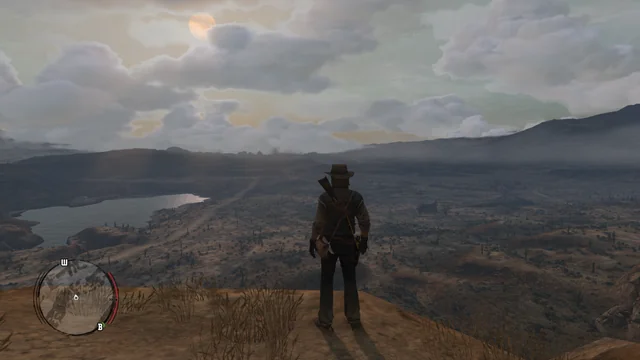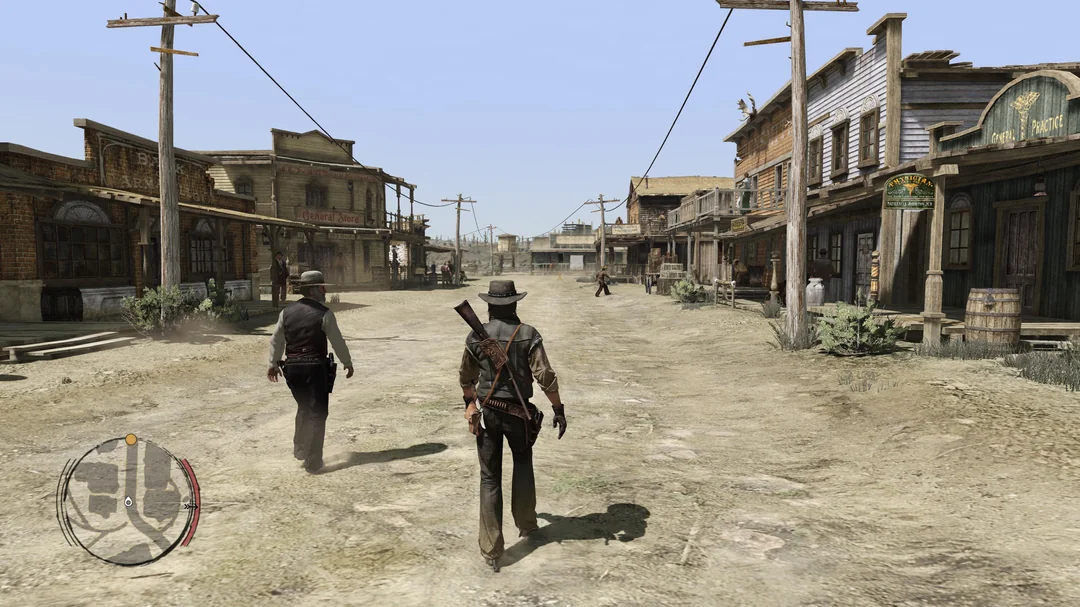If you’re playing Red Dead Redemption 1 on a PC with Intel HD/UHD and AMD graphics with a dedicated graphics card, you may encounter performance issues and distant objects (like animals and NPCs) disappearing as you move further away.
Table of Contents
However, you can optimize your game’s settings with custom settings or by tweaking the GraphicsOptions.xml file to achieve a balance between visual quality and smooth gameplay.
Here’s a guide to help you adjust your settings for better performance without sacrificing too much of the game’s visual fidelity on Intel HD 510, Intel HD 520, 615, 520, 530, Intel HD 4000, and even for Intel UHD Graphics 600, Intel UHD Graphics 605, Intel UHD Graphics 610, Intel UHD 620, Intel UHD 630, Intel UHD 730, Intel UHD 750, Intel Iris Plus, Intel Iris Xe Graphics, and Intel Iris Xe Max Graphics.
You may like: Fix Red Dead Redemption (RDR 1) Not Opening on PC


To run Red Dead Redemption 1 on an low PC with Intel HD Graphics, you’ll need to adjust the settings for optimal performance while maintaining playability. Here are some custom low settings that should help you get smoother gameplay:
RDR1 Low Settings
- Resolution: Set to 800×600 or 1024×768 for better performance. Reducing resolution will help the system handle the game more smoothly.
- Graphics Quality: Set to Low. This ensures minimal graphical demands on the system.
- Texture Quality: Set to Low. Textures can be a big performance hit, so reducing this will free up more resources.
- Shadow Quality: Set to Low or Off. Shadows can be taxing on integrated graphics, so it’s best to turn them down or completely disable them.
- Draw Distance: Set to Low. This will reduce the amount of objects that need to be loaded in the environment at once, improving frame rates.
- Post Processing Effects: Set to Low or Off. Effects like motion blur and anti-aliasing can slow down performance on low-end systems.
- Anisotropic Filtering: Set to Off or 2x. Higher levels of anisotropic filtering improve texture quality at angles but cost performance.
- Anti-Aliasing: Set to Off. Disabling anti-aliasing will help with performance, as it smooths out edges but can be demanding on integrated graphics.
- V-Sync: Set to Off. V-Sync limits the frame rate to the monitor’s refresh rate and can cause input lag or reduced frame rates.
- Water Quality: Set to Low. Water effects can be performance-heavy, so lowering this will help improve frame rates.
- Grass Quality: Set to Low. Reducing grass density will lessen the number of objects the system needs to render.
- Reflections: Set to Low or Off. Reflections can significantly impact performance, so it’s best to keep them turned off.
With these settings, the game should run more smoothly on low end pc, though keep in mind that even with these adjustments, performance might still be limited due to the integrated graphics hardware.


RDR Custom Low Settings
Custom settings to help you achieve a more stable and visually pleasing experience in Red Dead Redemption on a system with Intel HD graphics and AMD VGA display. Here are the custom settings you can apply on your computer:
<?xml version="1.0" encoding="UTF-8"?>
<rage__GraphicsOptions v="70.0">
<Fullscreen value="true"/>
<Monitor value="1"/>
<ResolutionX value="1152"/>
<ResolutionY value="720"/>
<RefreshRate value="60.000000"/>
<FrameRateLimit value="1"/>
<Vsync value="0"/>
<TripleBuffer value="false"/>
<DynamicResolution value="true"/>
<DynamicResolutionTargetFramerate value="0"/>
<DynamicResolutionMinScale value="0.100000"/>
<MinAnisotropicFiltering value="0"/>
<MotionBlurStyle value="0"/>
<MotionBlurStrength value="0.000000"/>
<ShadowQuality value="0"/>
<ShadowSoftness value="0"/>
<ShadowBlend value="0"/>
<WorldStreamingRadius value="50.000000"/>
<TerrainStreamingFactor value="50.000000"/>
<TreeLevelOfDetail value="0.000000"/>
<TreeImposterHighLodStreamingDistance value="0.000000"/>
<GrassStreamingDistance value="0.000000"/>
<bFocusPaused value="true"/>
<bConstrainMouse value="false"/>
<HDR value="false"/>
<PeakBrightness value="900.000000"/>
<PaperWhite value="300.000000"/>
<aaAntiAliasing value="0"/>
<FSR3UpscalingQuality value="0"/>
<FSR3AdditionalSharpness value="0.000000"/>
<NVIDIAReflex value="0"/>
<DLSSUpscalingQuality value="0"/>
<DLSSFrameGeneration value="0"/>
</rage__GraphicsOptions>Installation
After copying or downloading above custom settings, apply it to the game’s documents folder at C:\Users\PC-NAME\Documents\Rockstar Games\Red Dead Redemption\title this should make the game playable on your low end computer and laptop.
By increasing the resolution to 1600×900, improving object visibility with the World Streaming Radius and Grass Streaming Distance, and reducing shadow and anti-aliasing settings, you’ll be able to enjoy the game without the frustration of objects disappearing or poor performance.
FAQ’s
Frequently Asked Questions:
What graphics settings should I use to run Red Dead Redemption on Intel HD Graphics?
To maximize performance on Intel HD Graphics, set all graphics settings to Low or Very Low. Lowering resolution to 1280×720 (HD) will also help. Disable demanding features like Shadows, Anti-Aliasing, and Post-Processing Effects (such as Motion Blur or Depth of Field) to reduce strain on the system.
What are the best settings for low-end PCs in Red Dead Redemption?
For low-end PCs, set the following graphics settings to their lowest or medium options:
1. Resolution: 1280×720 (or lower)
2. Textures: Low
3. Shadows: Low or off
4. Anti-Aliasing: Off
5. Effects and Post-Processing: Disabled
6. V-Sync: Off
This will reduce the GPU load and help improve performance.
Does lowering the resolution help improve performance in Red Dead Redemption?
Yes, lowering the game’s resolution significantly boosts performance, especially on a low-end PC. Try playing at 1280×720 or even lower to get better FPS and a smoother gaming experience.
How can I improve FPS on a low-end PC while playing Red Dead Redemption?
To boost FPS, ensure that background applications are closed. Lower the in-game graphics settings, especially textures and shadows. Disabling overlays (like Steam or Discord) and setting the game’s priority to High in Task Manager can also improve FPS. Additionally, updating graphics drivers and using High Performance power mode in Windows can help.






